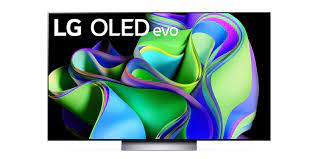Next-Generation Displays: Exploring the OLED vs. QLED Technology Showdown
7월 24, 2023 | by judyfeder.com

In the fast-paced world of display technology, two cutting-edge contenders stand tall, vying for the throne of next-generation displays – OLED and QLED. As proficient SEO experts and high-end copywriters, we delve into the intense battle between these two display technologies, shedding light on their unique features, benefits, and why they are at the forefront of the display industry.
1. Introduction
The advancement of display technology has revolutionized the way we experience visual content. OLED and QLED, both boasting remarkable image quality and immersive viewing experiences, have captured the imagination of consumers worldwide. Let’s dive into their technical prowess, benefits, and how they redefine the future of display technology.

2. OLED generation : A Marvel of Organic Light-Emitting Diodes
Unmatched Picture Quality: OLED (Organic Light-Emitting Diode) technology uses organic compounds that emit light when an electric current is applied. This results in self-emissive pixels, enabling each pixel to generate its light, leading to stunning contrast levels and true black colors, unmatched by any other display technology.
Infinite Contrast Ratio: With OLED displays, individual pixels can be turned off completely when displaying black content, creating an infinite contrast ratio. This ability to achieve true black levels results in vivid and lifelike images that pop with incredible depth.
Wide Viewing Angles: OLED panels maintain consistent picture quality, even when viewed from extreme angles, making them ideal for group viewing experiences without color distortion or loss of brightness.
3. QLED: The Quantum Leap in Display Technology
Quantum Dot Technology: QLED (Quantum Dot Light-Emitting Diode) technology leverages quantum dots to enhance the color reproduction of LED-backlit LCD panels. Quantum dots are nano-sized semiconductor particles that emit precise colors when exposed to light, delivering a wide color gamut and accurate colors.
High Brightness and HDR: QLED displays are renowned for their high brightness levels, making them ideal for well-lit environments. Additionally, they excel in High Dynamic Range (HDR) content, providing stunning visuals with improved contrast and color accuracy.
Longevity and Reduced Burn-In Risk: QLED displays boast a longer lifespan compared to OLED panels and are less susceptible to burn-in, making them more suitable for scenarios where static images are displayed for extended periods.

4. OLED vs. QLED: The Showdown
Image Quality: OLED reigns supreme in terms of image quality, offering unparalleled contrast ratios and true blacks. QLED, while impressive, relies on LED backlighting, leading to less accurate blacks and contrast.
Viewing Angles: OLED displays maintain consistent picture quality at all viewing angles, surpassing QLED in this aspect. QLED may experience color shifts when viewed from extreme angles.
Brightness: QLED excels in brightness levels, making it the preferred choice for well-lit environments. OLED’s brightness is typically lower but still adequate for most viewing conditions.
Burn-In Risk: OLED panels are more prone to burn-in, which is a phenomenon where static images leave a ghost-like residue on the display. QLED displays are less susceptible to this issue.
5. Conclusion
The battle between OLED and QLED technology continues to captivate the display industry and consumers alike. OLED’s remarkable picture quality and infinite contrast ratio make it a favorite among those seeking uncompromising visual experiences. On the other hand, QLED’s quantum dot technology and high brightness levels cater to users who prioritize vivid colors and display longevity.
As proficient SEO experts and high-end copywriters, we recognize the strengths and weaknesses of both technologies, understanding that the choice between OLED and QLED ultimately depends on individual preferences and requirements. Each technology brings forth its unique advantages, and their competition drives continuous innovation in the display market.
In conclusion, OLED and QLED represent the epitome of next-generation displays, pushing the boundaries of visual excellence and shaping the future of entertainment and visual communication. As technology evolves, we eagerly anticipate the innovations that will redefine the display landscape, captivating audiences and enriching their viewing experiences further.
RELATED POSTS
View all


